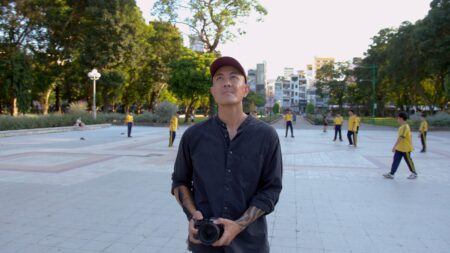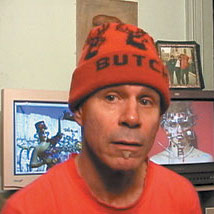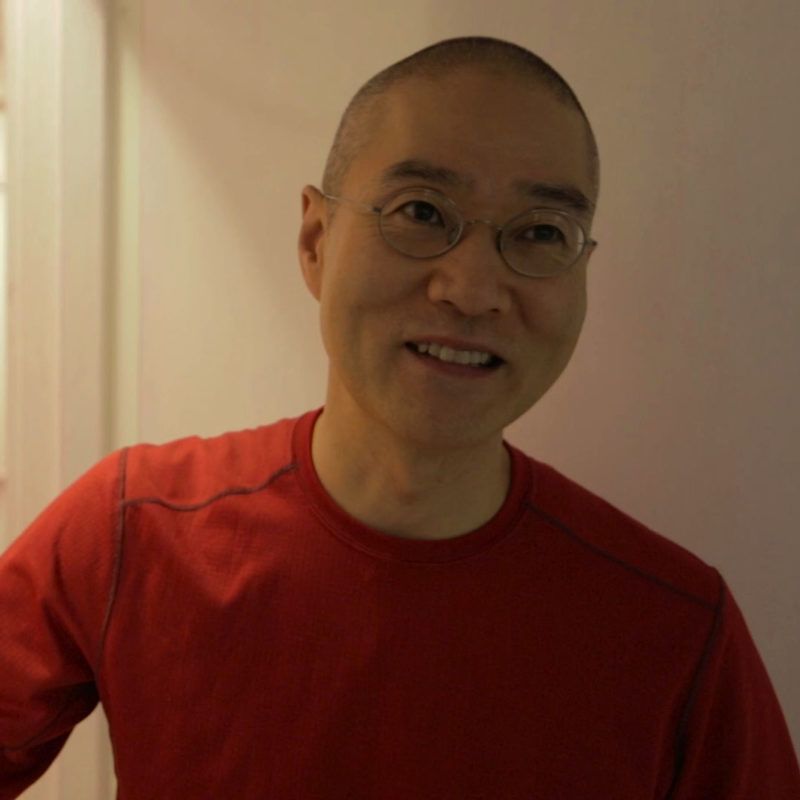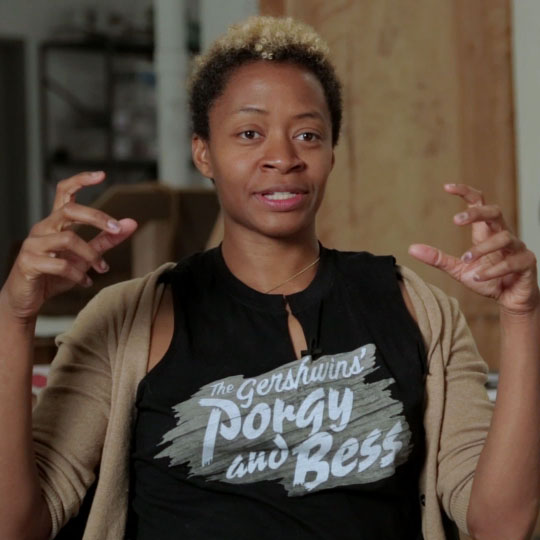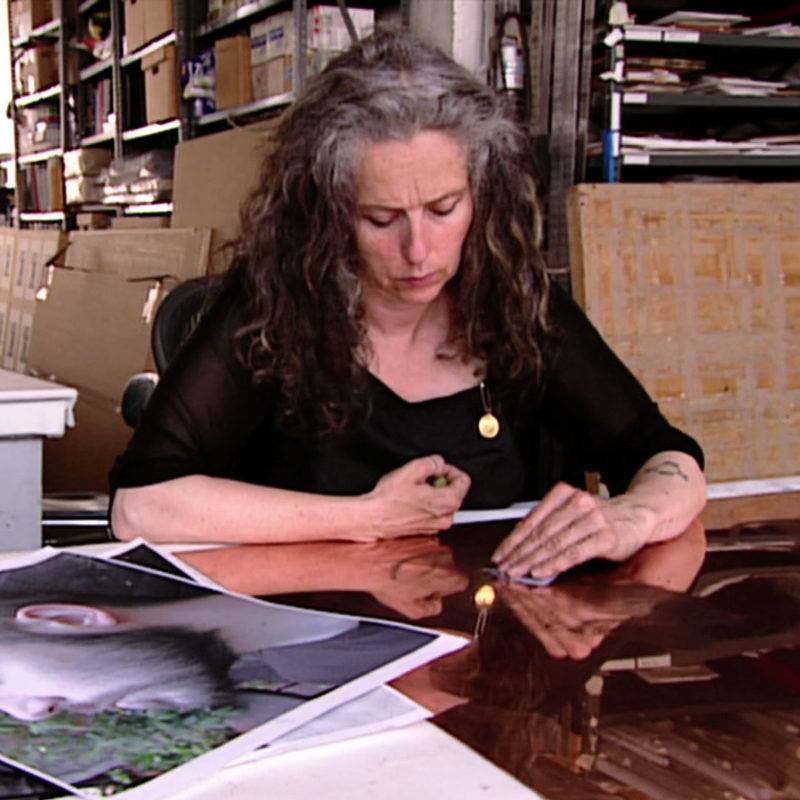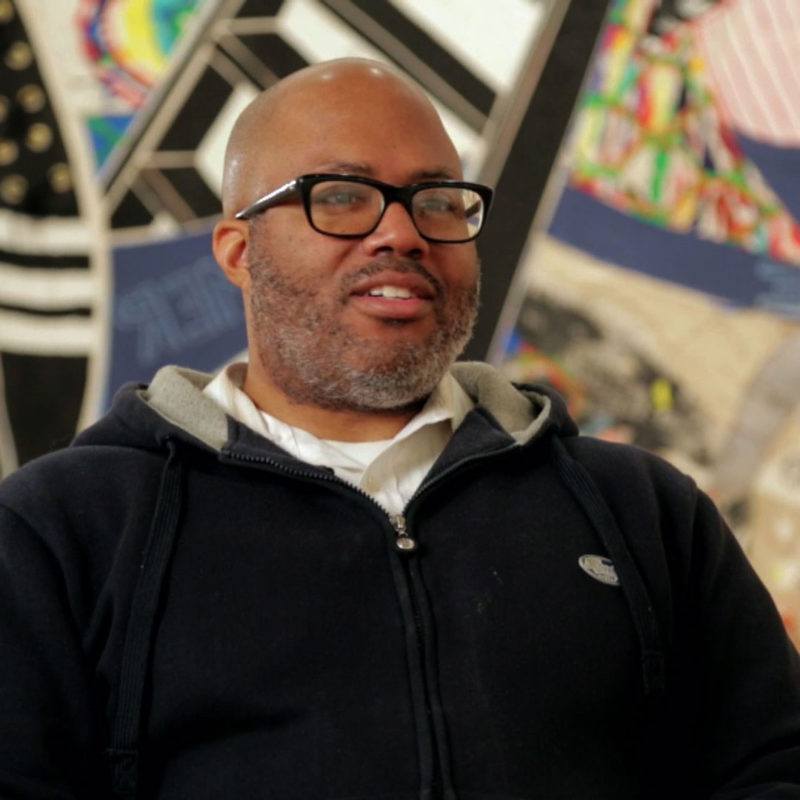Continue playing
(Time remaining: )
Play from beginning
Continue playing "{{ controller.videos[controller.getVideo(controller.currentVideo)].segmentParentTitle}}"
{{controller.videos[controller.getVideo(controller.currentVideo)].title}} has ended.
Stories
The artists profiled in Stories tell tales—autobiographical, fictional, satirical, or fantastical—through architecture, literature, mythology, fairytales, and history. These artists provoke us to think about our own stories, the characters and caricatures, the morals and messages that define our real and imagined lives. Filmed on location in São Paolo, Brazil; New York, New York; Saratoga Springs, New York; [foundry], New Jersey; Philadelphia, Pennsylvania, Seoul, South Korea; Seattle Washington; Houston, Texas; and Dallas, Texas.
Credits
Created by: Susan Sollins & Susan Dowling. Executive Producer & Curator: Susan Sollins. Series Producer: Eve-Laure Moros Ortega. Associate Producer: Migs Wright. Assistant Curator: Wesley Miller. Production Manager: Alice Bertoni & Laura Recht. Production Coordinator: Kelly Shindler & Sara Simonson. Director of Education & Outreach: Jessica Hamlin. Consulting Director: Charles Atlas. Editor: Kate Taverna. Host Segment Artist: Charles Atlas. Host: John Waters. Director of Photography: Mark Falstad, Mead Hunt, Tom Hurwitz, Dave Insley, Cameron Wookyoung Kim, Ken Kobland, Nancy Schreiber, & Joel Shapiro. Sound: Rick Angelella, Taylor Braendel, Tom Bergin, Gordon Glascock, Sangil Han, Heidi Hesse, Jerry Stein, Scott Szabo, & Bill Wander. Gaffer/Grip: Kyle Carver, Mark Clark, Rodney French, Ned Hallick, Jeff Howison, Sam Insley, & John Roche. Assistant Camera: Jarred Alterman, Marie Chao, Chris de Gail, Anthony Fennell, Woosuck Goh, Brian Hwang, Steve Nealey, & Kipjaz Savoie. Host Make-Up: Betty Beebe. Production Assistant: Mark Chavarria, Eli Flugelman, Josh Kurz, Eric Kutner, Tony Petracci, & Matt Wright. Teleprompter: Dominic Anello. Additional Avid Editor (Kiki Smith segment): Lizzie Donahue. Assistant Avid Editor: Anne Alvergue, Heather Burack, Julie Farol, Geoff Gruetzmacher, & Eric Kutner. Still Photography: Alice Bertoni, Peter Krogh, & Fraser Stables.
Creative Consultant: Ed Sherin. Graphic Design & Animation: Open, New York. Animation, Visual Effects & Compositing: Spontaneous Combustion. On-Line Editor: Don Wyllie & Frame:Runner NYC. Composer: Peter Foley. Voice-Over Artist: Jace Alexander. Sound Editing: Margaret Crimmins, Greg Smith, & Dog Bark Sound. Sound Mix: Tony Volante & Soundtrack F/T. Animation Stand: Frank Ferrigno & Frame:Runner NYC.
Artworks courtesy of: Trenton Doyle Hancock; Kiki Smith; Do-Ho Suh; Kara Walker; Brent Sikkema; Dunn & Brown Contemporary, Dallas; Edwin A. Ulrich Museum of Art; Fabric Workshop & Museum, Philadelphia; Huntington Gallery, Massachusetts College of Art; James Cohan Gallery; Lehmann Maupin Gallery; MASS MoCA; Museum of Contemporary Art, Los Angeles; Pace Editions; Pace/MacGill; PaceWildenstein; Shoshana Wayne Gallery; Solomon R. Guggenheim Museum; Tony Smith Estate; & Whitney Museum of American Art. Archival footage courtesy of: Bradley B. Miller & Rachel-Anne Younger.
Special Thanks: The Art21 Board of Trustees; Asian Art Museum; Jamie Bennett; Ian Berry; Julia Sprinkel Downes; Talley Dunn; Tracey Frey; Ultan Guilfoyle; Harlan and Weaver; Holy Cross Cathedral Shekinah; Mark Janzen; Johnson Atelier; Museum of Fine Arts, Houston; Sue Patterson; Seattle Art Museum; The Tang Teaching Museum and Art Gallery at Skidmore College; Two Palms Press; Jonathan Turer; & Gretchen Wagner.
Interns: Sharon Ber, Elana Davidian, Eliza Geddes, Karmin Guzder, Ehren Joseph, Lisa Kalikow, Lila Kanner, Crystal Kui, Daniela Leonard, Ronny Merdinger, Parth Savla, Kristen Smith, Whitney Smith, Morgan Soloski, Jo-ey Tang, Asya Varshishky, Jesse Whittle-Utter, & Jeremy Zilar.
Public Relations: Kelly & Salerno Communications. Legal Counsel: Albert Gottesman. Bookkeeper: William Handy.
Major underwriting for Season 2 of Art in the Twenty-First Century is provided by National Endowment for the Arts, PBS, Corporation for Public Broadcasting, The Allen Foundation for the Arts, Agnes Gund and Daniel Shapiro, Bloomberg, The Jon and Mary Shirley Foundation, Nonprofit Finance Fund, JPMorgan Chase, The Andy Warhol Foundation for the Visual Arts, The Horace W. Goldsmith Foundation, New York Arts Recovery Fund, Peter Norton Family Foundation, New York Times Company Foundation, Dorothea L. Leonhart Foundation, and Elizabeth Firestone Graham Foundation.
Closed captionsAvailable in English, German, Romanian, Italian, Japanese, Korean, Chinese, Italian
Through the Art21 Translation Project, multilingual audiences from around the globe can contribute translations, making Art21 films more accessible worldwide.
Interested in showing this film in an exhibition or public screening? To license this video please visit Licensing & Reproduction.
Charles Atlas is a filmmaker and video artist who has created numerous works for stage, screen, museum, and television. Atlas is a pioneer in the development of media-dance, a genre in which original performance work is created directly for the camera. Many of Atlas’s works have been collaborations with choreographers, dancers, and performers, including Yvonne Rainer, Michael Clark, Douglas Dunn, Marina Abramovic, Diamanda Galas, John Kelly, and Leigh Bowery. Atlas acted as Consulting Director for “Art in the Twenty-First Century” (Seasons 2 through 5), creating the original opening programs for each hour-long segment of Season 2, as well as supervising the “Stories,” “Loss and Desire,” “Memory,” “Play,” “Protest,” and “Paradox” episodes.
Best known for his intricate sculptures that defy conventional notions of scale and site-specificity, Do Ho Suh draws attention to the ways viewers occupy and inhabit public space.In several of the artist’s floor sculptures, viewers are encouraged to walk on surfaces composed of thousands of miniature human figures. Whether addressing the dynamic of personal space versus public space, or exploring the fine line between strength in numbers and homogeneity, Suh’s sculptures continually question the identity of the individual in today’s increasingly transnational, global society.
Kara Walker explores the raw intersection of race, gender, and sexuality in her work, crafting vivid psychological narratives from a contemporary perspective on historical conditions. Over the past two decades, Walker has unleashed the traditionally Victorian medium of the silhouette onto the walls of the gallery, creating immersive installations that envelop the viewer. Walker’s multi-media work—which includes drawing, watercolor, video, and sculpture—often reconsider grotesque caricatures, probing their persistence in popular culture and reclaiming their subjugating power to alternative ends.
In the 1980s, Kiki Smith literally turned the figurative tradition in sculpture inside out, creating objects and drawings based on organs, cellular forms, and the human nervous system. This body of work evolved to incorporate animals, domestic objects, and narrative tropes from classical mythology and folk tales. Life, death, and resurrection are thematic signposts in many of Smith’s installations and sculptures. The recurrent subject matter in Smith’s work has been the body as a receptacle for knowledge, belief, and storytelling.
Trenton Doyle Hancock’s prints, drawings, and collaged-felt paintings work together to tell the story of the Mounds—a group of mythical creatures that are the tragic protagonists of the artist’s unfolding narrative. Each new work by Hancock is a contribution to the saga of the Mounds, portraying the birth, life, death, afterlife, and even dream states of these half-animal, half-plant creatures. Influenced by the history of painting, especially Abstract Expressionism, Hancock transforms traditionally formal decisions—such as the use of color, language, and pattern—into opportunities to create new characters, develop sub-plots, and convey symbolic meaning. Balancing moral dilemmas with wit and a musical sense of language and color, Hancock’s works create a painterly space of psychological dimensions.
“Basically, I think art is just a way to think. It’s like standing in the wind and letting it pull you in whatever direction it wants to go.”
Kiki Smith
